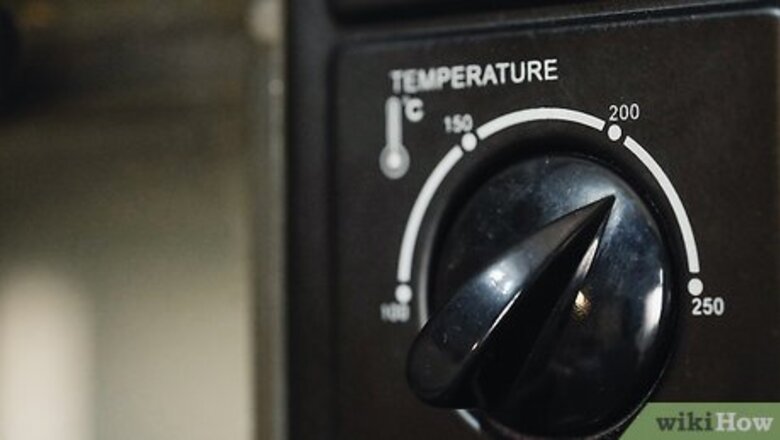
views
Roasting Whole Bell Peppers
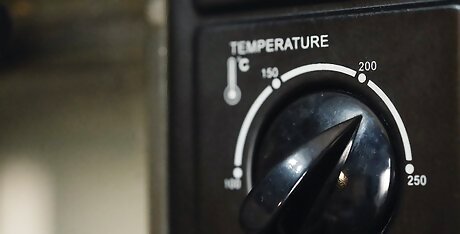
Preheat the oven to 400 °F (204 °C). The roasting process will come first before you de-seed the peppers in order to preserve the flavor. Working in this sequence also helps to keep the peppers from becoming more charred than they need to be.
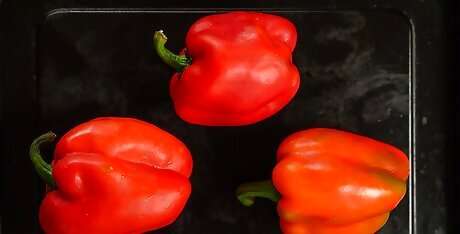
Place the whole peppers on their sides on a greased oven-safe tray. Using either some olive oil or parchment paper, cover or line an oven-safe tray. You want your peppers to lay on their sides while they cook with the stems pointing to the left or right. Do not use aluminum foil. Aluminum can seep into vegetables as they cook for longer periods of time in the oven. Arrange the bell peppers so they have about 1 in (2.5 cm) of space between them. This will ensure they cook evenly on all sides.
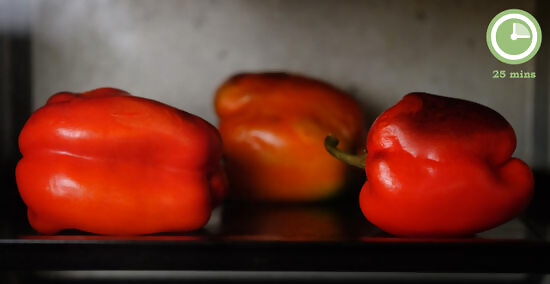
Cook the peppers for 25 minutes. Once the oven has finished preheating, carefully place the tray with your peppers into the oven on the middle or upper rack. Be sure to use an oven mitt! As the peppers cook, you may notice some charing on the sides. If you want the flavor later on, you can keep some of it. Otherwise, it will peel off with the skins.
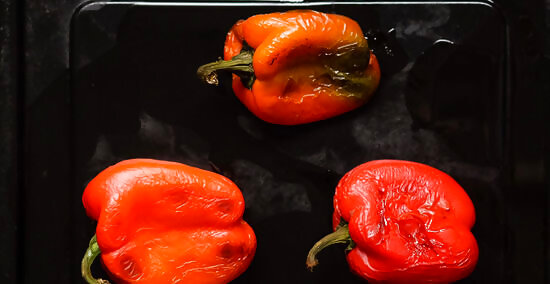
Remove the tray and turn the peppers. After the 25 minutes of cooking, carefully remove the tray from the oven. Use tongs or two large spoons to help you turn the peppers a half turn. The sides that were on the bottom of the tray should now be on top and vice-versa.
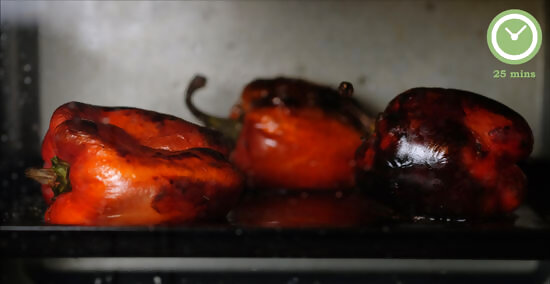
Cook the peppers for another 25 minutes. If after the full 50 minutes of cooking, the peppers should look soft and slightly deflated. If they aren’t quite there yet, cook them for another 5-10 minutes. The cooking serves two main purposes. First, roasting the peppers softens them and draw out their delicious flavor. Second, the heat wrinkles and separates the skins on the outside from the pepper, making them easier to remove.
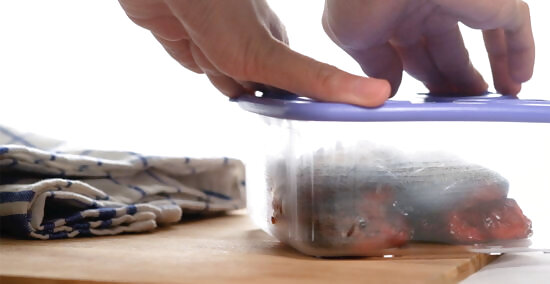
Remove the peppers from the oven and cover them immediately. After taking the tray out, remove the peppers from the tray. Put them in a sealable glass bowl, a cooking pot with a lid, or some other heat-resistant container that can be closed. There does not have to be a full seal. You could also put the peppers on a chopping block and overturn a bowl on top of them. Avoid putting them into a zippable baggy. The heat from the peppers may warp or melt the plastic onto the peppers. A brown paper bag will work as well, but it may end up a little messier in the end if the moisture deteriorates the bag.
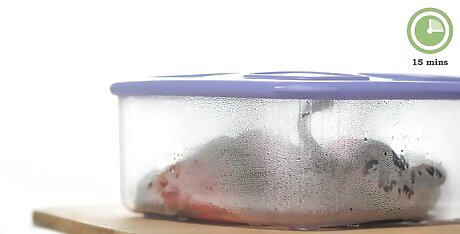
Let the peppers steam for 15 minutes. Trapping the bell peppers in their own heat and steam will cool them down and help loosen the seeds on the inside. Additionally, this softens the outer skin to make it easier to peel off later.
Removing the Seeds and Skins
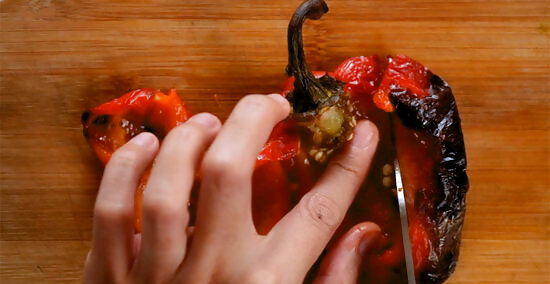
Cut the peppers lengthwise in halves or quarters. Cut from the stem to the bottom of the pepper into either two or four pieces. Place them on a cutting board or other washable surface.
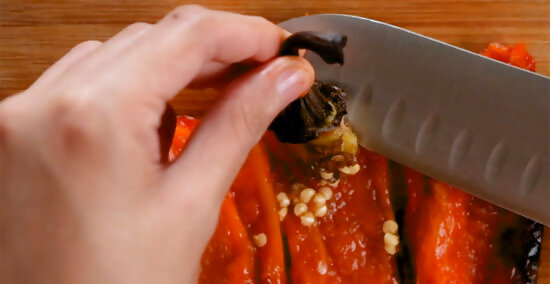
Scrape out the seeds and stem from each pepper. Working one by one, you will want to pull the stem from the pepper and scrape out all of the seeds with a knife. Wear gloves if you want to avoid touching the seeds themselves. You can rinse the pepper under water to help remove the seeds, but this may reduce some of the flavor on the surface of the pepper. If you enjoy the added flavor of the seeds, you can certainly keep as many in the pepper as you like.
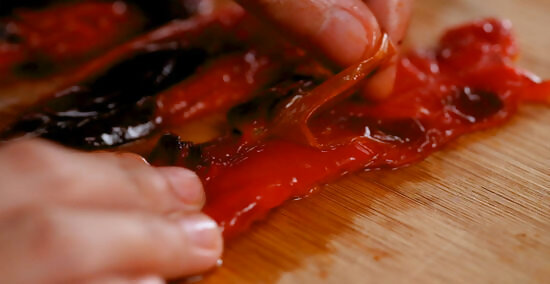
Flip the peppers over to peel off the outer skin. Between the cooking and steaming, the outer layer of skin should be quite easy to remove at this point. Simply use your fingers or a knife to peel the skins up and off. The skins, seeds, and stems can all be discarded. As mentioned this will remove the charred exterior. If you want to keep any of the charred flavor, peel less of the skin in those areas.
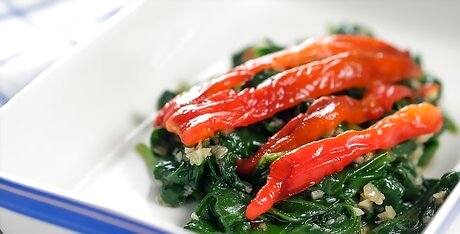
Prepare the peppers to eat or store. If you are going to eat the peppers immediately, you can simply add some olive oil with salt and pepper after cutting the pieces down to your preferred size. If you intend to store the peppers, you can put them into a bag or reusable container with olive oil for up to 2 weeks. Freezing the peppers can preserve them for closer to a month without diminishing the flavor too much. You do not need to fully submerge the peppers in the olive oil. Simply drizzle the oil over the peppers in their container to help preserve them.











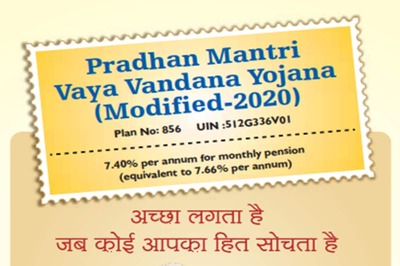




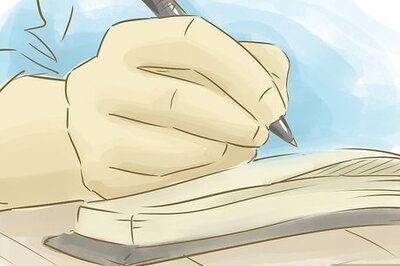

Comments
0 comment